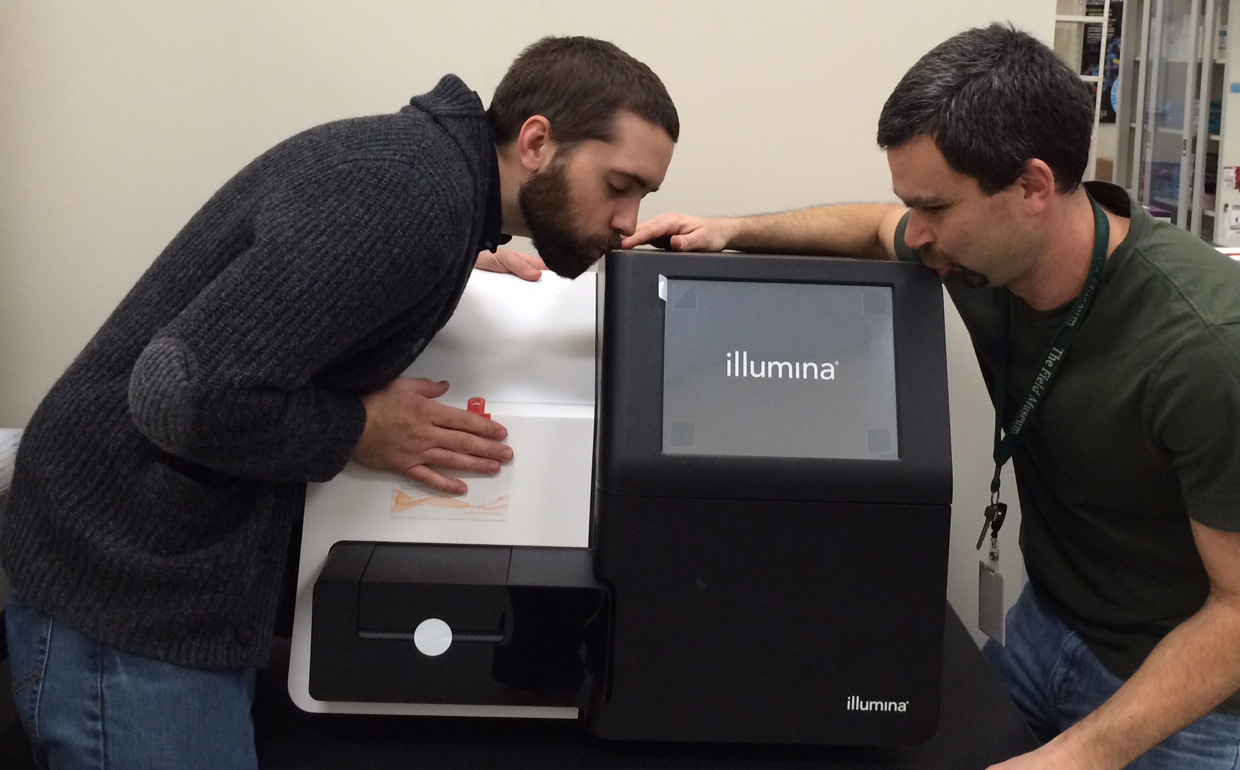Future of DNA Investigations at The Field Museum
The glass windows that enclose The Field Museum’s Pritzker Laboratory on the second floor of the Museum give visitors a glimpse into the daily lives of the scientists, students, and interns that work there. Now, visitors can also get a glimpse of the future – a new DNA sequencer has arrived, and its users are busy enjoying its capabilities!
“We don’t look like the scientists you see on TV, or in movies,” says Shannon Hackett, Associate Curator of Birds and member of the Pritzker Lab management committee. “We are regular people, and it’s great for visitors to the Museum to see our team at work behind the glass. The team in our lab is dedicated to telling the world what we do, and showing them how we do it.”
The new DNA sequencer, called the MiSeq System for Next Generation Sequencing, will help the team do just that. The MiSeq is capable of sequencing an organism’s entire genome, or set of DNA, in a single work day!
“Prior to this, anyone who wanted to sequence an organism’s genome had to send a sample out to a different site, since our old sequencer could only do a part of it. It could take several weeks, or even months, to receive the results,” says Hackett.
The ability to sequence an organism’s entire genome, versus just a part of it, allows scientists to take a step back and view the organism’s genetic make up in its entirety.
“DNA, a single molecule, connects us to every living thing on earth – past, present, and future – because it forms the basis for life. The more we know about the genetic make up of the species that are studied at the museum, the more we can communicate to the people that come to see what we do,” says Hackett.
Until now, the Pritzker Lab has had the ability to isolate DNA from plant and animal tissues, make copies of it, and then sequence a small part of the genome.
“We have a machine that we’ve nicknamed The Smashinator, because it enables us to extract DNA from almost any sample type we might have, plant or animal,” says Hackett. “And now, the next generation sequencer will allow both museum scientists and those visiting from other institutions to sequence entire genomes, right there in the lab!”
“Having the ability to collect more data is really going to revolutionize how we do science in the Pritzker Lab. We’re all really excited to about this new technology,” says Kevin Feldheim, A. Watson Armour III Manager of the Pritzker Laboratory.
The MiSeq sequencer is probably best known for its application in the study of cancer. Clinical researchers use the sequencer to sample tumor genomes, which helps tumor biologists determine the molecular basis for disease in cancer.
It works by taking DNA that’s been isolated using ‘The Smashinator” and performing a series of reactions on a plate that allow it to determine the sequence of base pairs in the individual strands of DNA.
At The Field Museum, DNA sequencing is performed on a variety of species - from animals such as sharks and birds, to plants from Asia and lichens from the tropics, to microscopic organisms like bacteria and malarial parasites - in order to answer all kinds of questions about the way our world works.
“All you need to be a scientist is curiosity,” says Hackett.
Check out the Pritzker Lab online! Don’t forget to pay a visit to see the MiSeq in action and hear for yourself about how it works!
